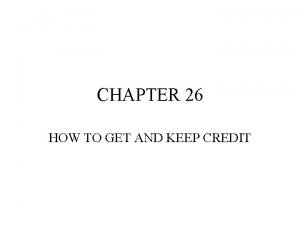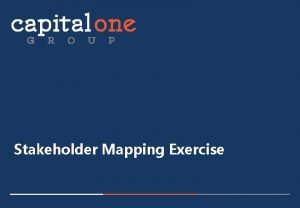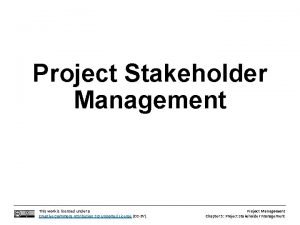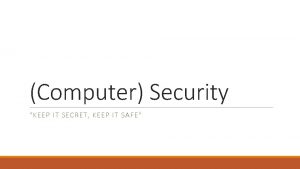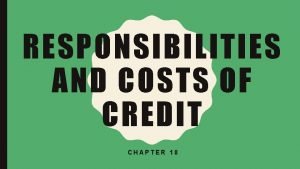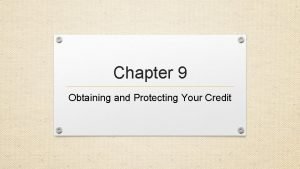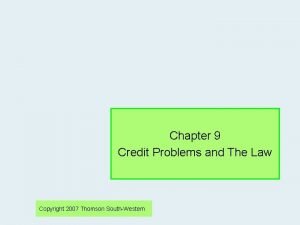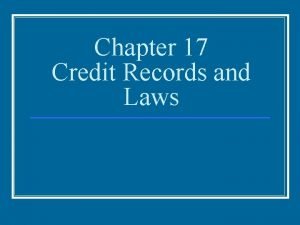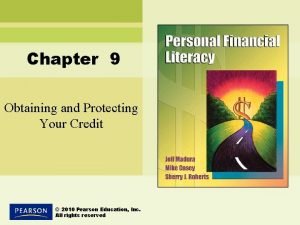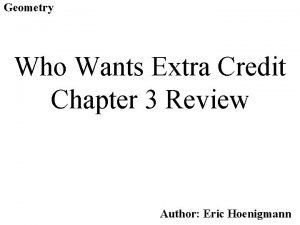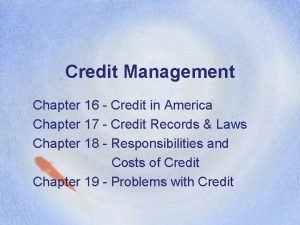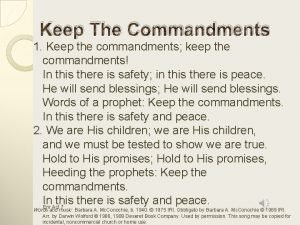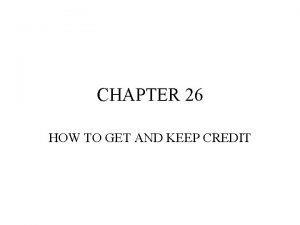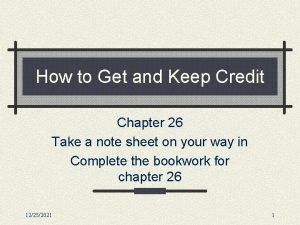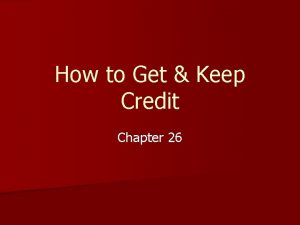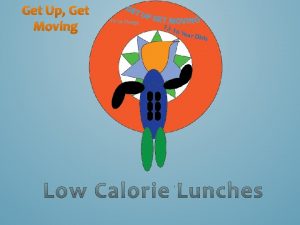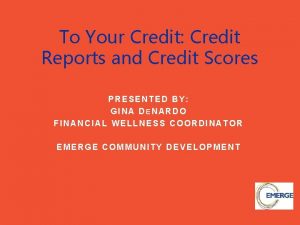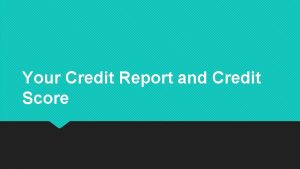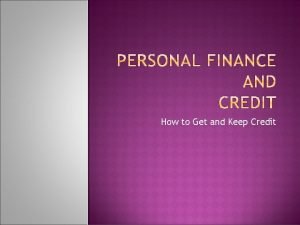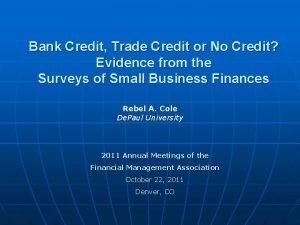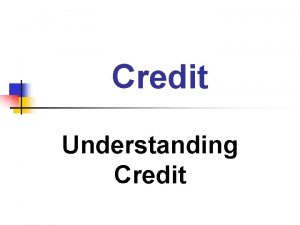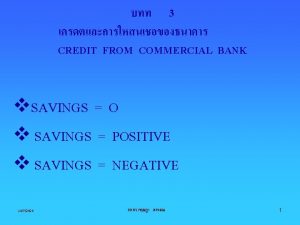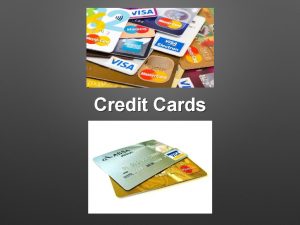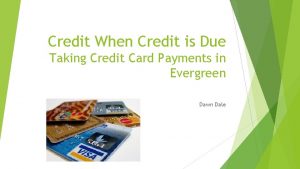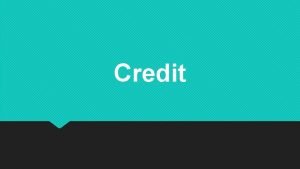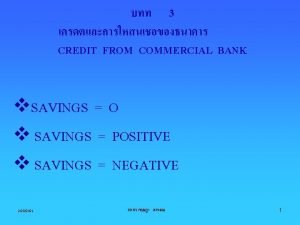CHAPTER 26 HOW TO GET AND KEEP CREDIT




















- Slides: 20

CHAPTER 26 HOW TO GET AND KEEP CREDIT

NATURE OF CREDIT • Picking a credit card – Main factor should be cost of card – But also look at: – Who accepts card? – Can you get cash advance? – What “perks” or benefits are there to the card? • Free miles, cash back, rebates on purchases, etc.

APPLYING FOR CREDIT • Fill out credit application – Where you live – Where you work and for how long – Other credit you have – Amount in checking and savings accounts

FIVE C’s OF YOUR CREDITWORTHINESS • Capacity – your ability to repay a loan • Character – your likeliness to repay a loan • Credit History – the way you have repaid in the past – Use a credit bureau • Credit bureau is a company that reports: – Pay bills on time – Miss payments – How much debt you have

FIVE C’s OF YOUR CREDITWORTHINESS • Capital – do you have money to repay the loan • Collateral – what will you give up if you do not repay the loan

WORTHINESS • Credit limit – how much each lender will allow you to charge with them – If you show you are responsible, many lenders will increase your credit limit • Cosigners – someone who will pay the loan if you fail to do so – Can use this person as way to establish credit

STOP SLIDE

LOANS • Credit cards are short term loans • Use to pay for smaller items or ones you can repay quickly • Higher interest rates than loans from banks • Use bank loans for larger or more expensive items

TYPES OF LOANS • Installment loans – Make down payment (which is part of the total cost of the item) – Rest is owed in equal payments over time – Interest is charged based on principal (which is amount you borrowed) • Cash loans – Borrow from bank or credit card (cash advance) and pay back over time in installments – Interest rates vary widely, so check before you get one

LOANS • Secured loan – a loan backed by collateral – Lower interest rate than unsecured • Unsecured loan – a loan backed only by your promise to repay – Higher interest rate than secured – More risk to creditor

COSTS OF CREDIT • Annual Percentage Rate (APR) – Cost of borrowing money if you were to borrow it for the full year • Finance Charges – total it costs you to borrow the money – Includes fees charged for loan, interest, etc. – Creditor has to issue this by law

COSTS OF CREDIT • Changes in interest rates can hurt you • Variable rate loans change the interest rate as the interest rate banks pay goes up – Your loan can become more expensive – Be careful about introductory offers – Know the real cost of credit • Fixed rate loans never change, regardless of what the interest rates are doing • Which is better?

COSTS OF CREDIT • Fees – charged for credit services – Application fee – Credit check fee – Cash advance fee – Late/missed payment fee • Grace period – amount of time you have to pay off loan before the interest charges are added – If pay off during this time, you pay NO interest

STOP SLIDE

KEEPING CREDIT • Start with smaller loans and small credit • Build responsibility early so you can get more credit later • Work hard to maintain your credit rating

CREDIT BURDEN • You should use no more than 20% of your income for credit • Making minimum payment – Will take over 30 years to pay off a $2, 500 loan on a credit card if only make minimum payment. Will have paid over $7, 500 in interest. – Pay off debts earlier, and as early as possible

OVEREXTENDING • When credit limit is reached, tempting to just use another card • Credit should only be used responsibly • If not, eventually you will owe all your money in credit

CREDIT PROBLEMS • Credit problems can arise if you get too in debt • Missing payments or having payment due letters sent to your house will hurt credit rating • Some creditors can take money from your paycheck before you get it (garnishment) • Some creditors can take back the collateral you pledged for the loan (repossess)

HOW TO GET CREDIT • Start small – Cell phone in your own name (non-prepaid) – Get single purpose credit card and use it, but pay it off every month – Get a secured credit card (pre-paid) – Get cable in your own name – Have cosigner for a loan – Borrow money from bank if possible (small amount) and repay it with interest • Sometimes you have to pay to establish credit

STOP SLIDE
 Get on get in get off
Get on get in get off Chapter 26 how to get and keep credit
Chapter 26 how to get and keep credit One direction figurative language
One direction figurative language Stakeholders mapping
Stakeholders mapping Keep satisfied manage closely monitor keep informed
Keep satisfied manage closely monitor keep informed Keep it secret keep it safe
Keep it secret keep it safe Sahabat nestle reward
Sahabat nestle reward This can be avoided by giving credit where credit is due.
This can be avoided by giving credit where credit is due. Get up get moving quiz
Get up get moving quiz Get up get moving quiz
Get up get moving quiz Get up get moving quiz
Get up get moving quiz What is selection in pseudocode
What is selection in pseudocode Get focused get results
Get focused get results Germer
Germer Chapter 18 responsibilities and costs of credit
Chapter 18 responsibilities and costs of credit Chapter 9 obtaining and protecting your credit
Chapter 9 obtaining and protecting your credit Chapter 9 credit problems and laws
Chapter 9 credit problems and laws Chapter 17 credit records and laws
Chapter 17 credit records and laws Chapter 9 obtaining and protecting your credit
Chapter 9 obtaining and protecting your credit Vertical name
Vertical name Property pledged to assure repayment of a loan
Property pledged to assure repayment of a loan

